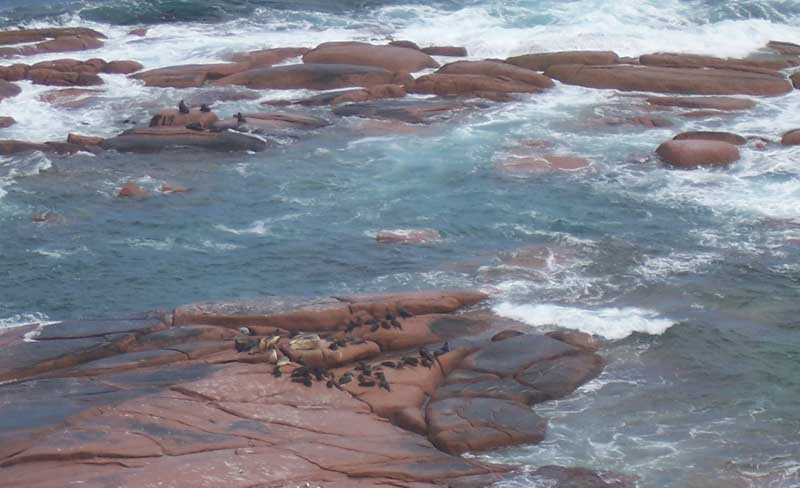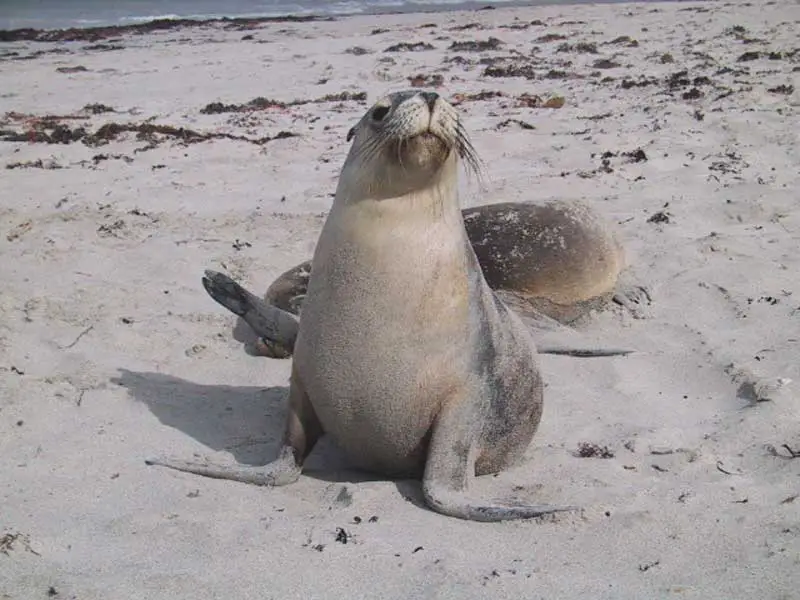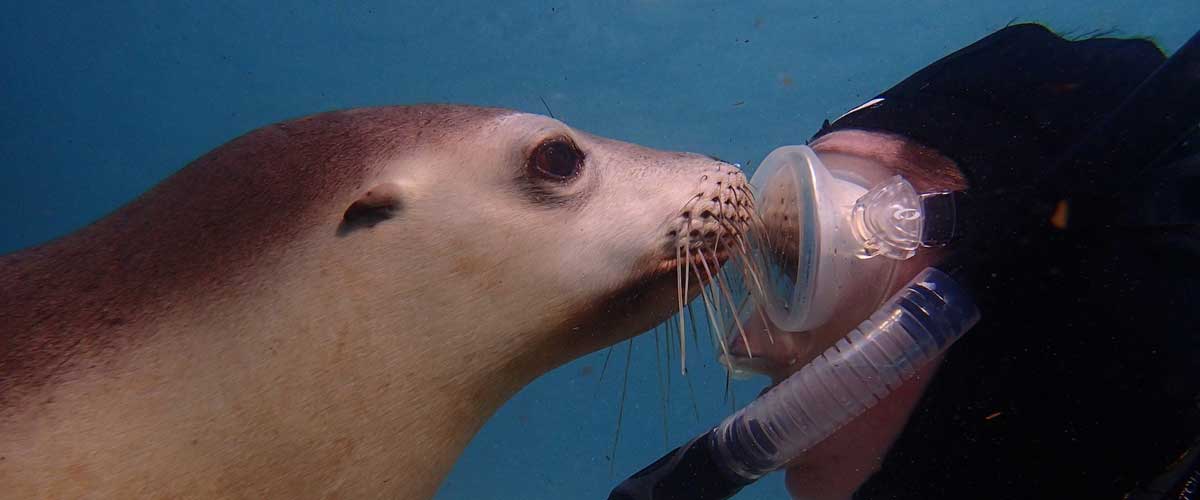There are presently only 3,000-5,000 Australian sea lions in existence and they are thought to be the rarest.
The Australian sea lion has a breeding range which extends from islands off Western Australia to islands east of Kangaroo Island (South Australia). The Australian sea lion once bred in Bass Strait but was eradicated by the sealing industry. Australian sea lions have been rarely recorded in Tasmania and are difficult to distinguish from other local seal species if you’re not an experienced observer.
The largest populations are found on Kangaroo Island and Dangerous Reef (near Port Lincoln) in southern Australia. The smallest numbers are found on the west coast of southern Australia and in Western Australia.
Located at Point Labatt on the rugged coastline south of Streaky Bay, South Australia, is a clifftop viewing platform above a colony of Australian Sea Lions. The reefs here provide a resting place for the sea-lions, which have often spent several weeks at sea catching fish. Point Labatt has exposed headlands, sheltered bays and is known for bird life including the Osprey and the Whitebellied Sea-eagle.

Point Labatt colony
Australian Sea Lions can be found in some zoos and in sealife sanctuaries, such as Seaworld on the Queensland gold coast.
The largest confirmed individual whale shark was 12.65 metres in length. The heaviest weighed more than 36 tonnes, but unconfirmed claims report considerably larger whale sharks. This distinctively-marked fish is the only member of its genus Rhincodon and its family, Rhincodontidae (called Rhinodontes before 1984), which belongs to the subclass Elasmobranchii in the class Chondrichthyes. The species originated about 60 million years ago. Although whale sharks have very large mouths, they feed mainly, though not exclusively, on plankton, microscopic plants and animals, although the BBC program Planet Earth filmed a whale shark feeding on a school of small fish.
Australian sea lions are found only on mainland Australia and offshore islands. They prefer sandy beaches or smooth rocks as breeding or haul-out sites. They are very social animals and gather in large groups, particularly during the breeding season.
In October, males come ashore and battle for territories. The females come ashore 2-3 weeks later. Males may keep a harem of over 80 females, although 4-6 females are typical.

Sea lion pup, Point Labatt
Both sexes of the Australian Sea Lion have stocky bodies, a large head and short narrow flippers. Apart from size, the sexes are easily identified by coat colour. The male is dark brown with mane-like yellow areas on the neck and top of the head. The females are silver grey to fawn on the back and creamy coloured underneath. Pups are born with a chocolate brown fur, which is lost after the first moulting phase. Males (bulls) are 2-2.5m in length, females (cows) are smaller at 1.3-1.8m. Males weigh 250-300kg and females 61-104kg.
This species is endemic to Australian waters and breeds on at least 50 islands off the coast of Western Australia and South Australia. Sea Lions prefer sandy beaches, usually in isolated bays and sheltered areas. One such site on Kangaroo Island off South Australia has become a popular tourist attraction.
Australian Sea Lions form loose associations within the breeding colonies. Males do not form harems but will guard and then mate with individual females in turn.
The Australian Sea Lion’s diet is poorly known but probably includes a variety of fish and invertebrates such as octopus and squid. There is some suggestion that they occasionally take penguins.
The Australian Sea Lion is protected by Australian State and Federal government legislation and listed as rare by the IUCN. Australian Sea Lion numbers are relatively small compared to other seals in the area and like most it suffered heavily during the 19th century sealing period with many colonies being wiped out.










